| Big projects to simple ideas |
|
 Trike plane
|
 | ||||||
  |
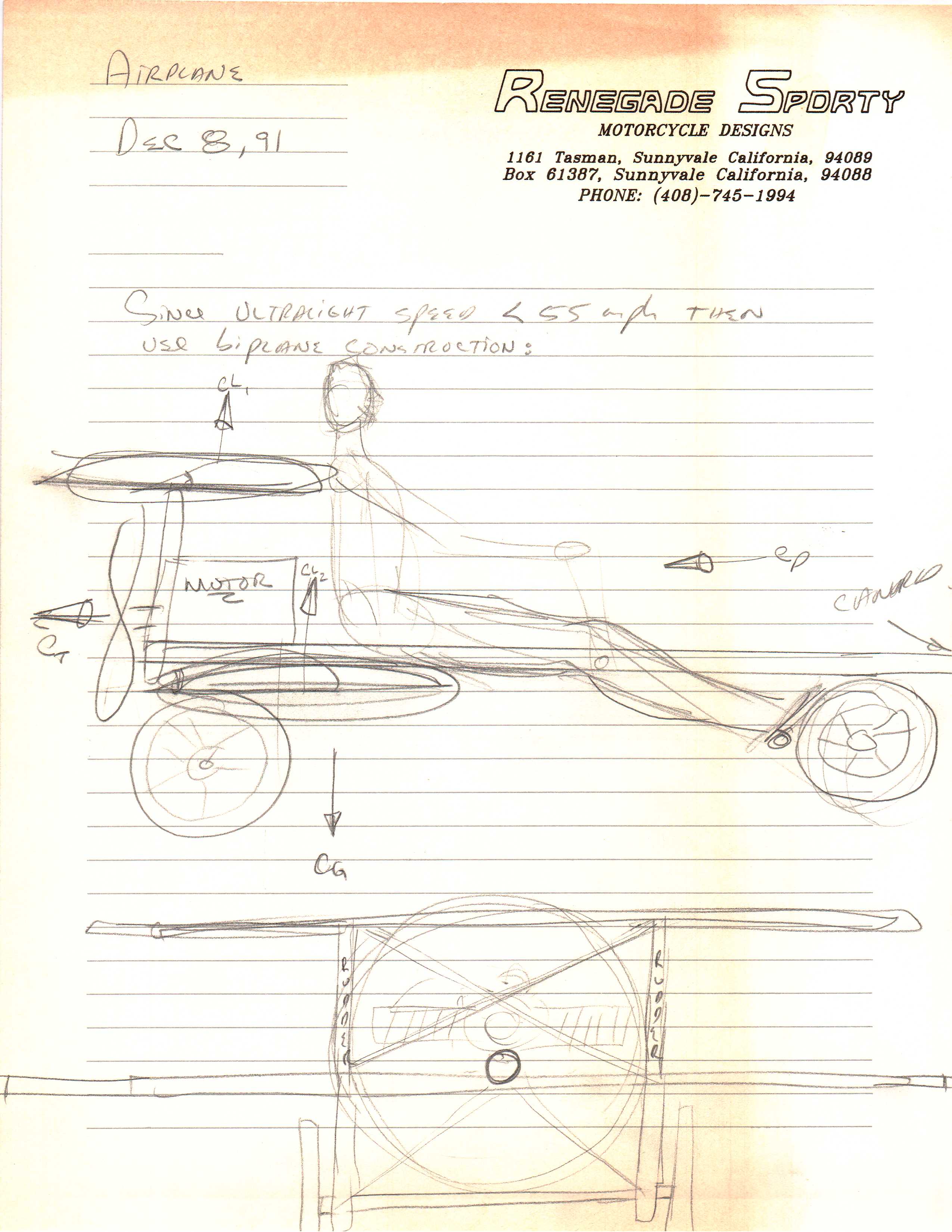
December 1991 biplane design to lower the stall speed and create a box structure.
|
 |
  |
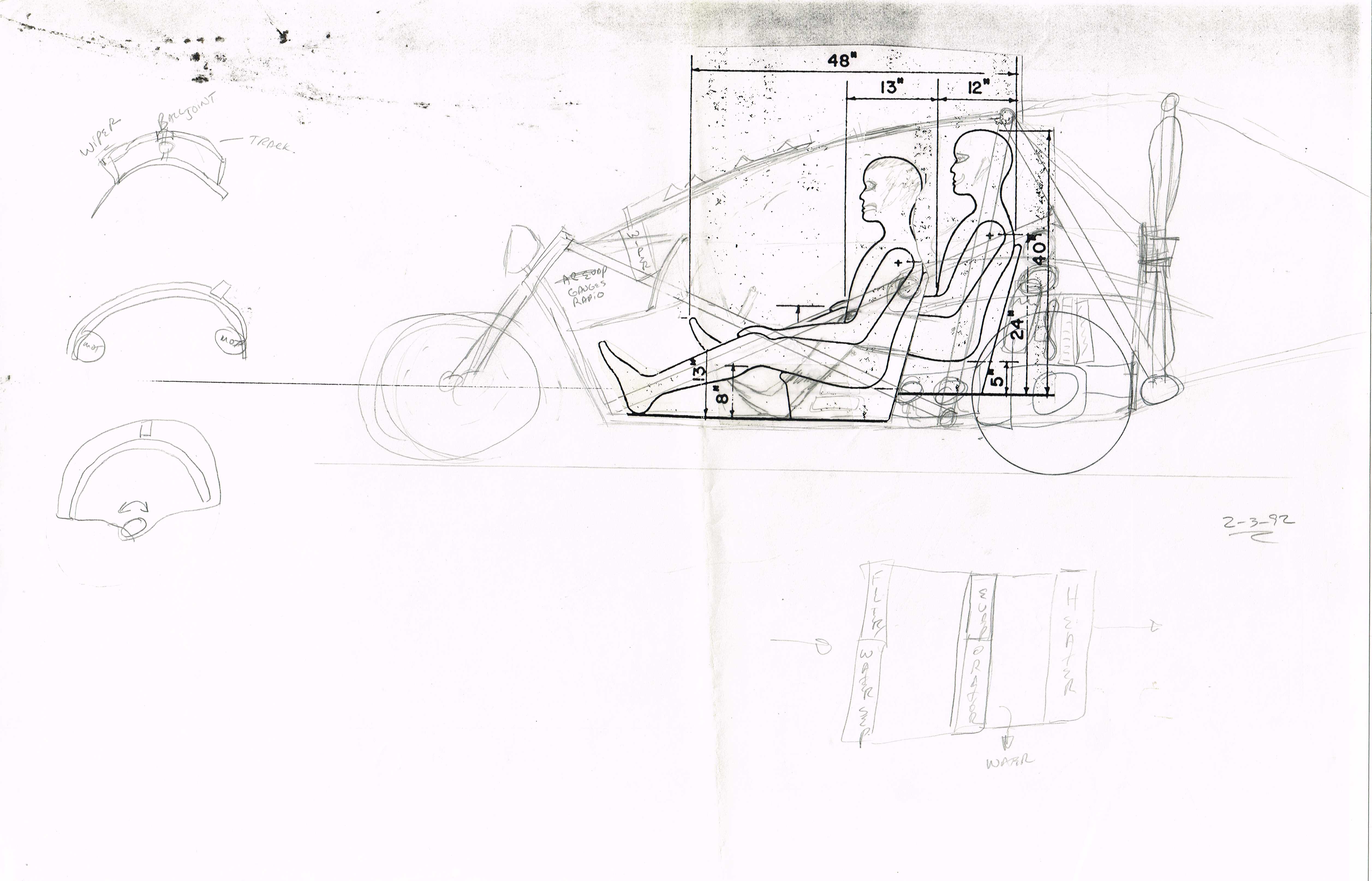 . In February 1992 I used a 2D print of two human profiles to establish the overall size. I have put in a proper roll cage. There is a windshield, as evidenced by the "wiper" call-out in the dash area. It also looks to have provisions for air conditioning from the little side-sketch. This version is a mid-wing with a conventional pusher propeller as opposed to ducted fans. The V-twin engine has given way to a Volkswagen Beetle power-train for the rear wheels. I think I planned on taking power from the tail housing of the VW transmission to drive a belt up to the propeller. 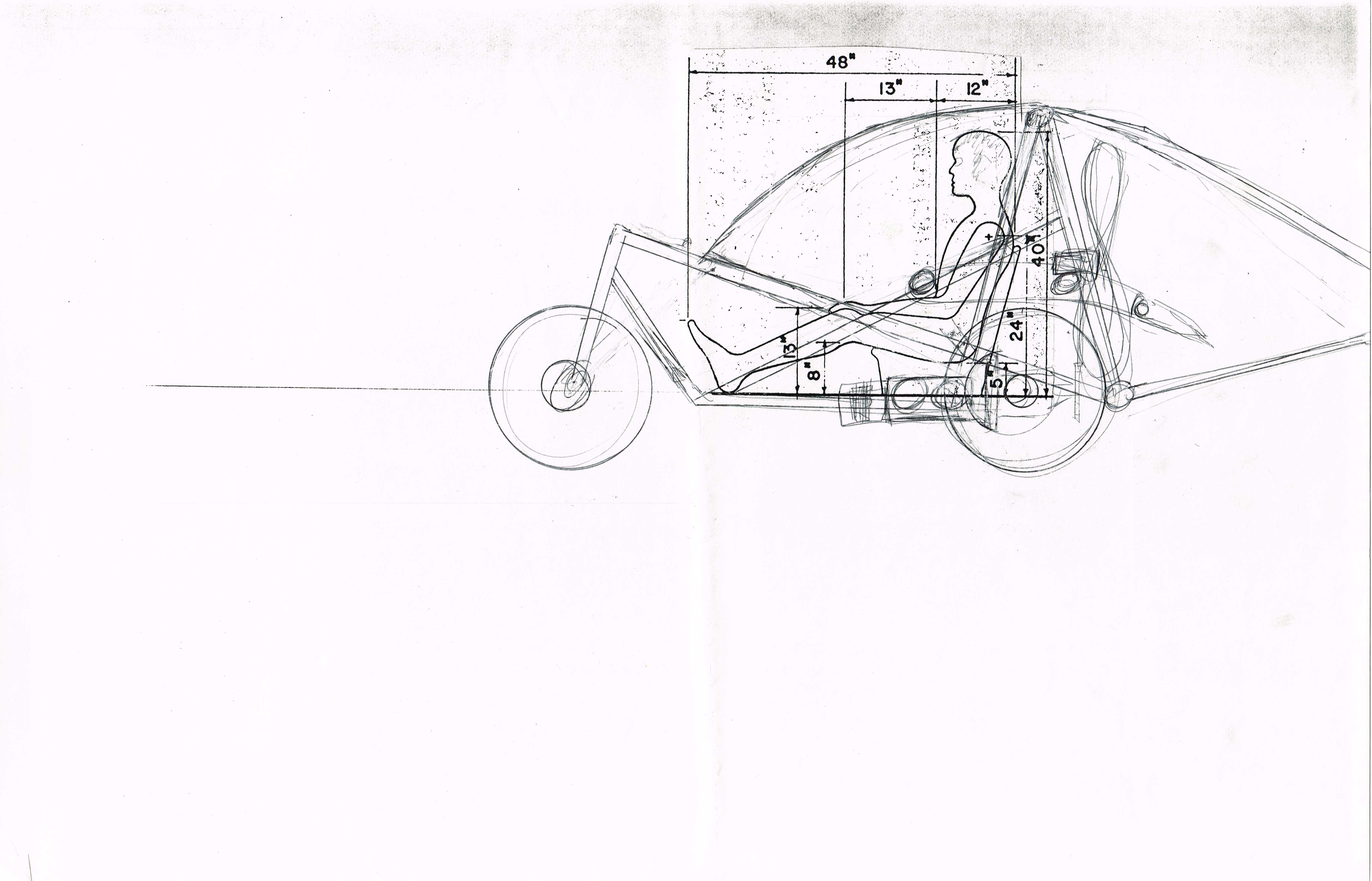 A single-seat version with the VW drive-train. A fer lines with a ruler, sketches are one reason I was an early adopter of CAD. I first saw a pen plotter when I was an engineer at Ford motor in Dearborn. It was drawing an F-sized sheet metal drawing. The guy demonstrating it noted it used a 12-cent Bic pen. In 1987 I bought a PC to do schematics. |
 |
  |
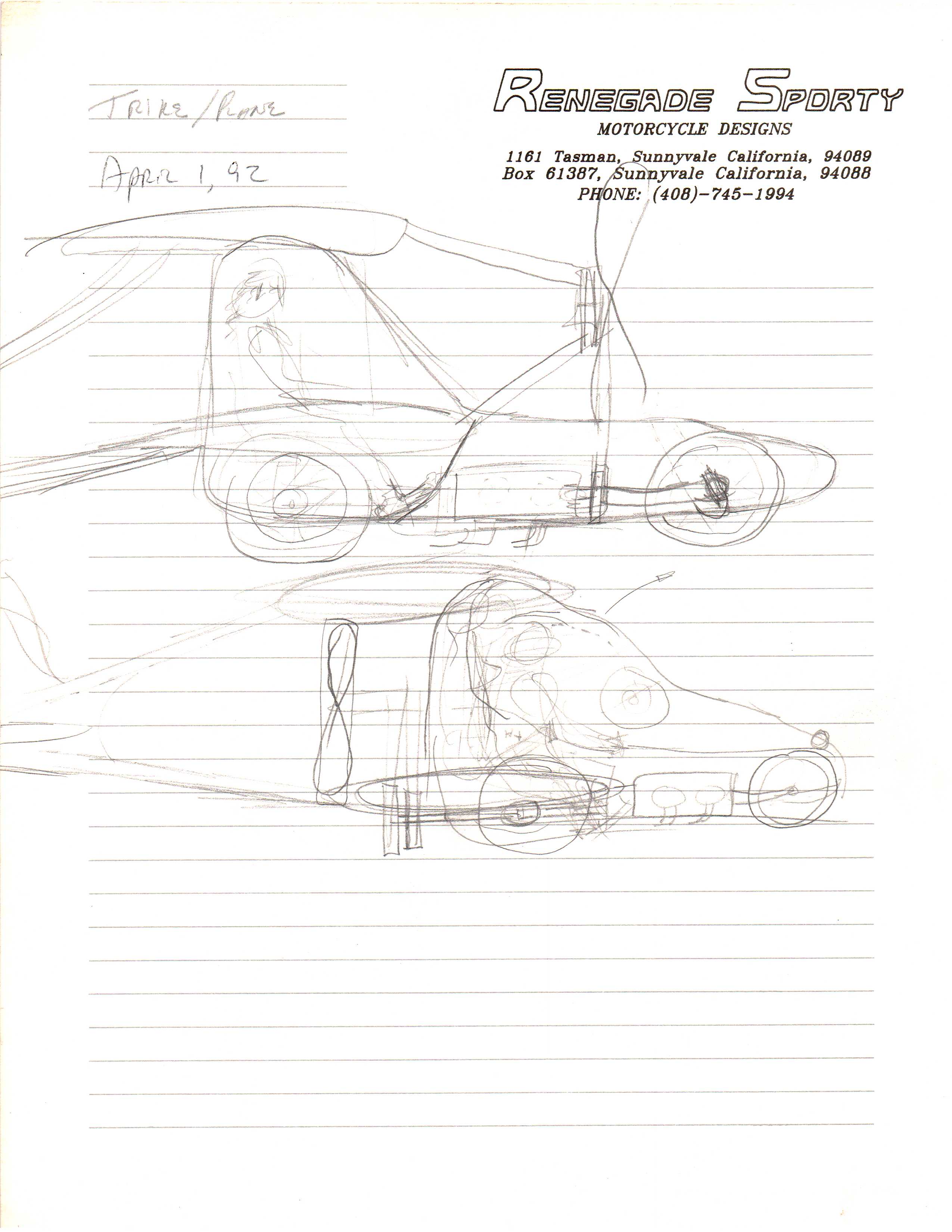 April 1992 study of puller vs pusher. 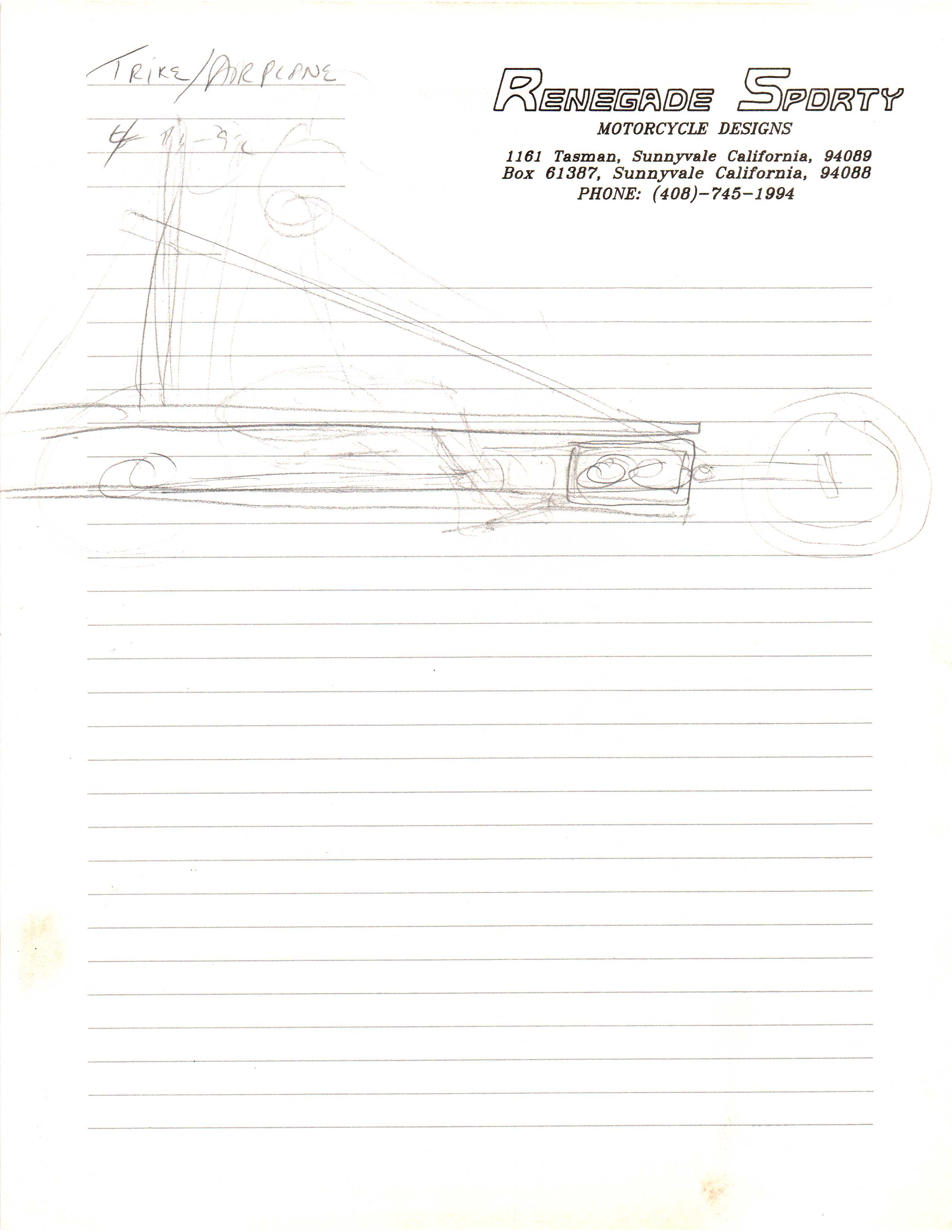 |
 |
  |
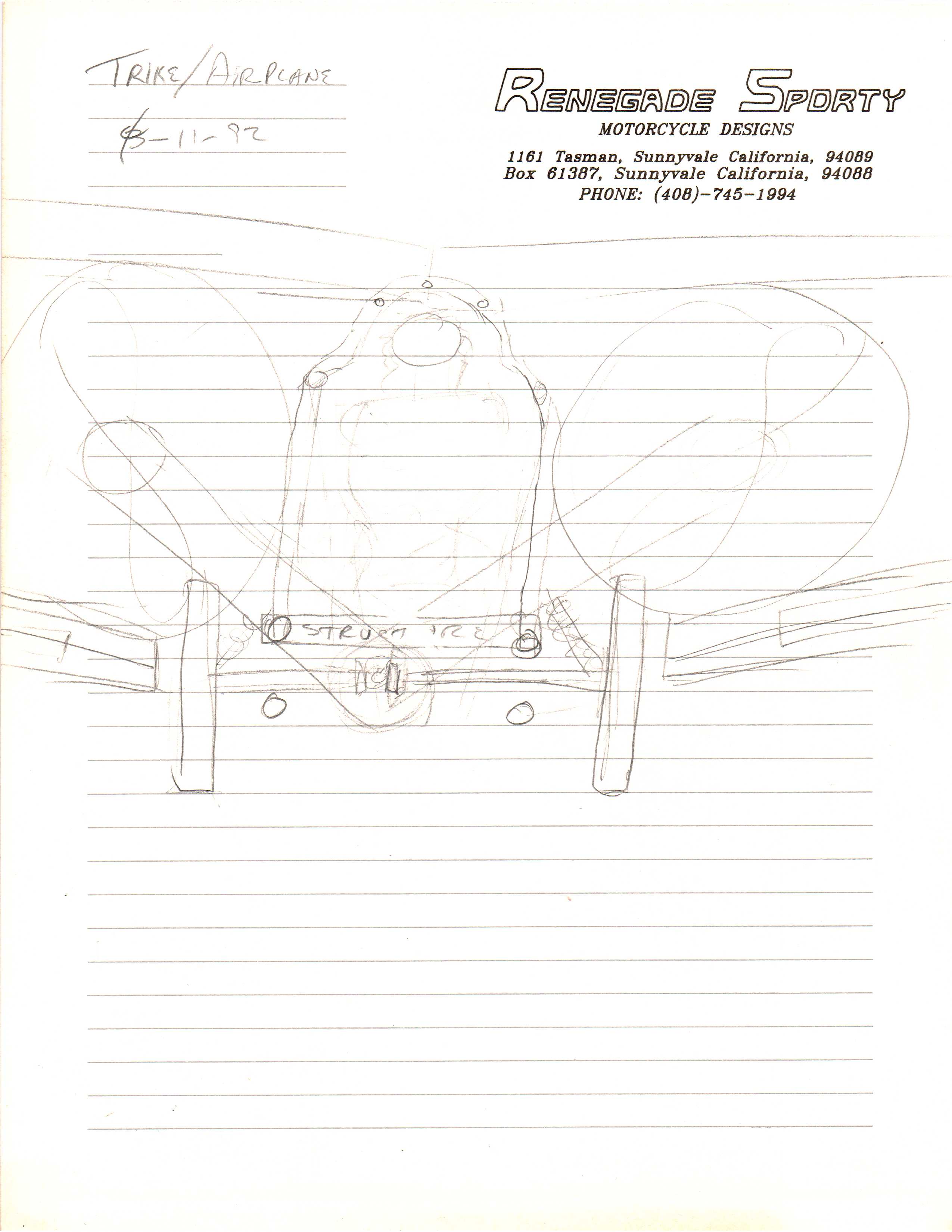 August-1992 study with two shrouded propellers. 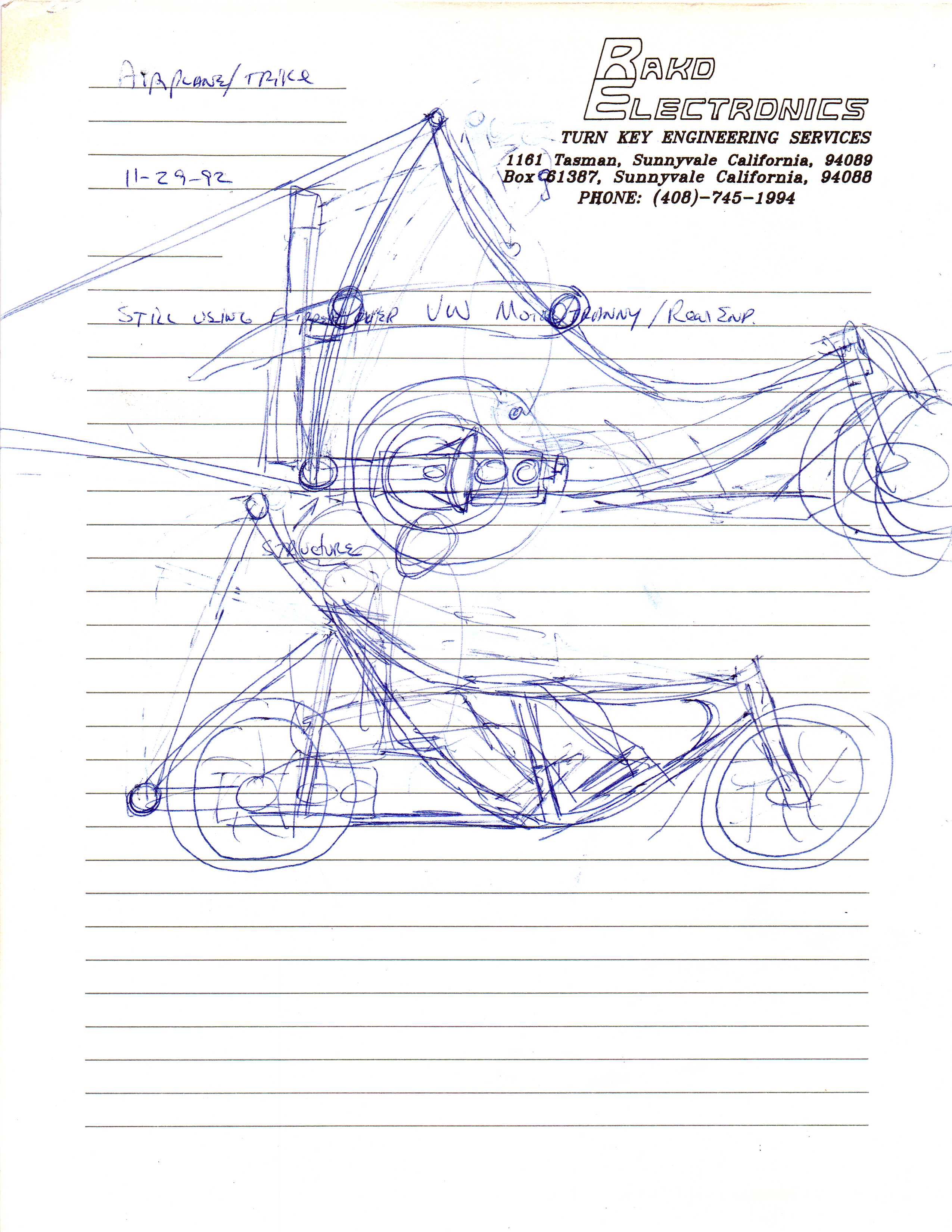
November-1992 VW drive-train, mid-wing. |
 |
  |
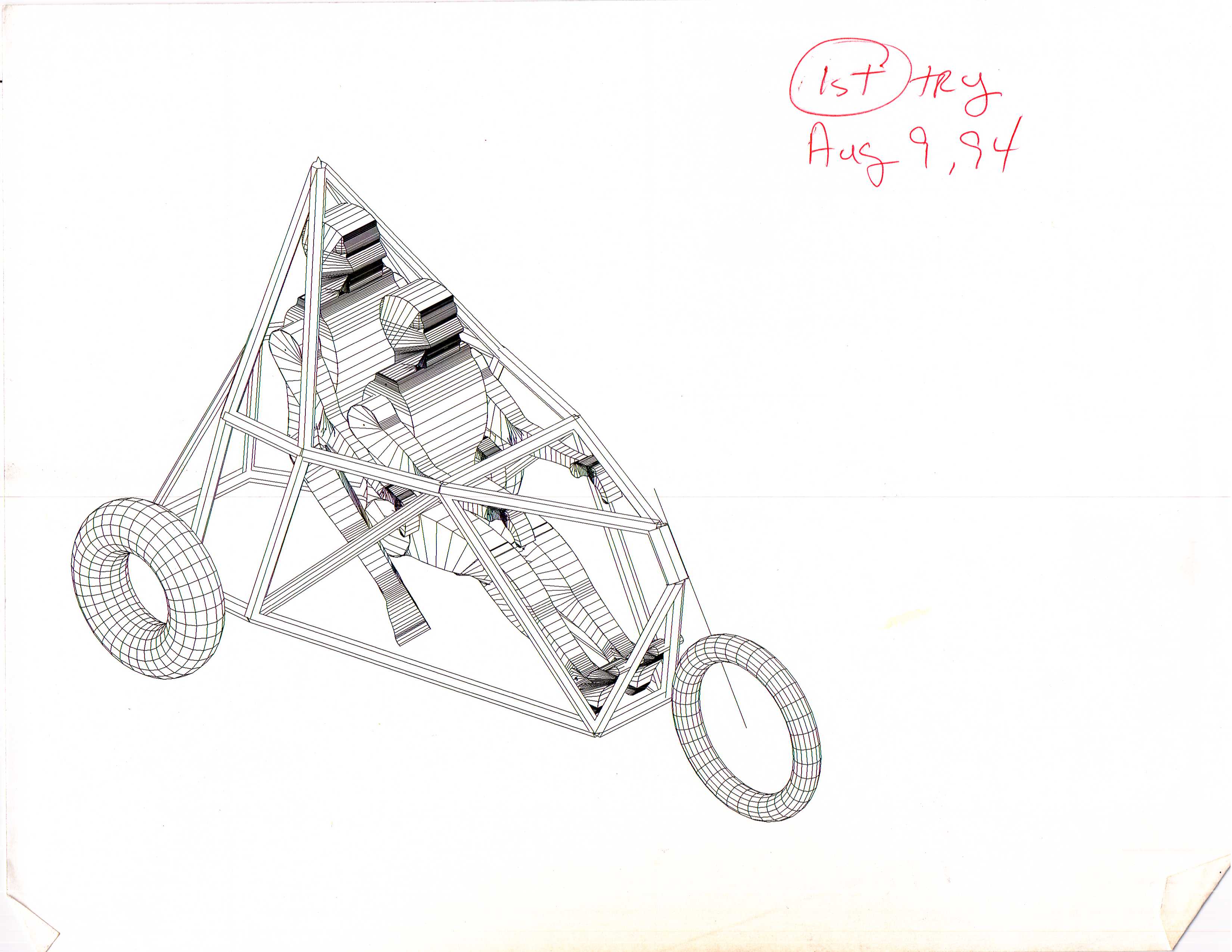 AutoCAD plot from August 1994, no fenders, blocked out human forms. 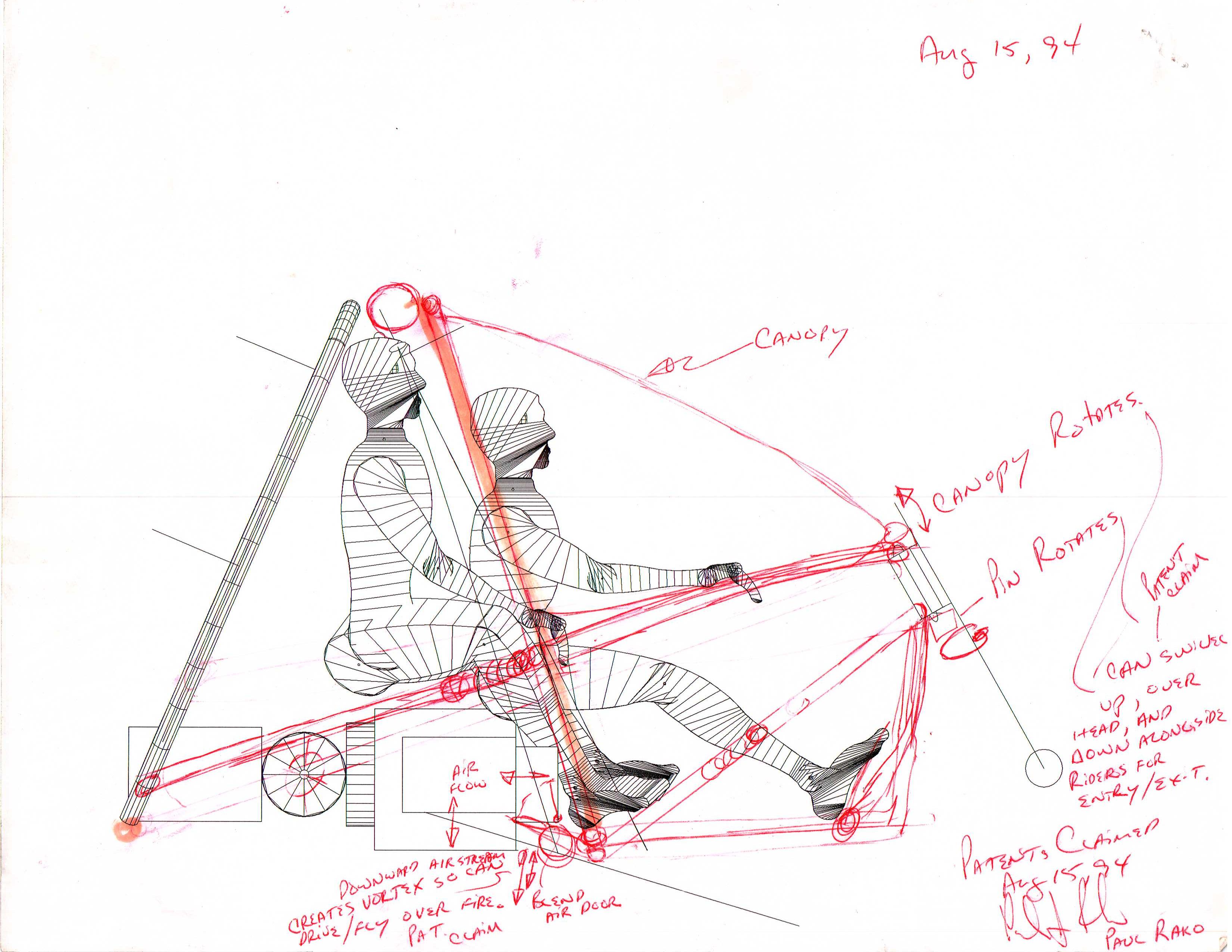 The best thing about plots is you can red-line them. 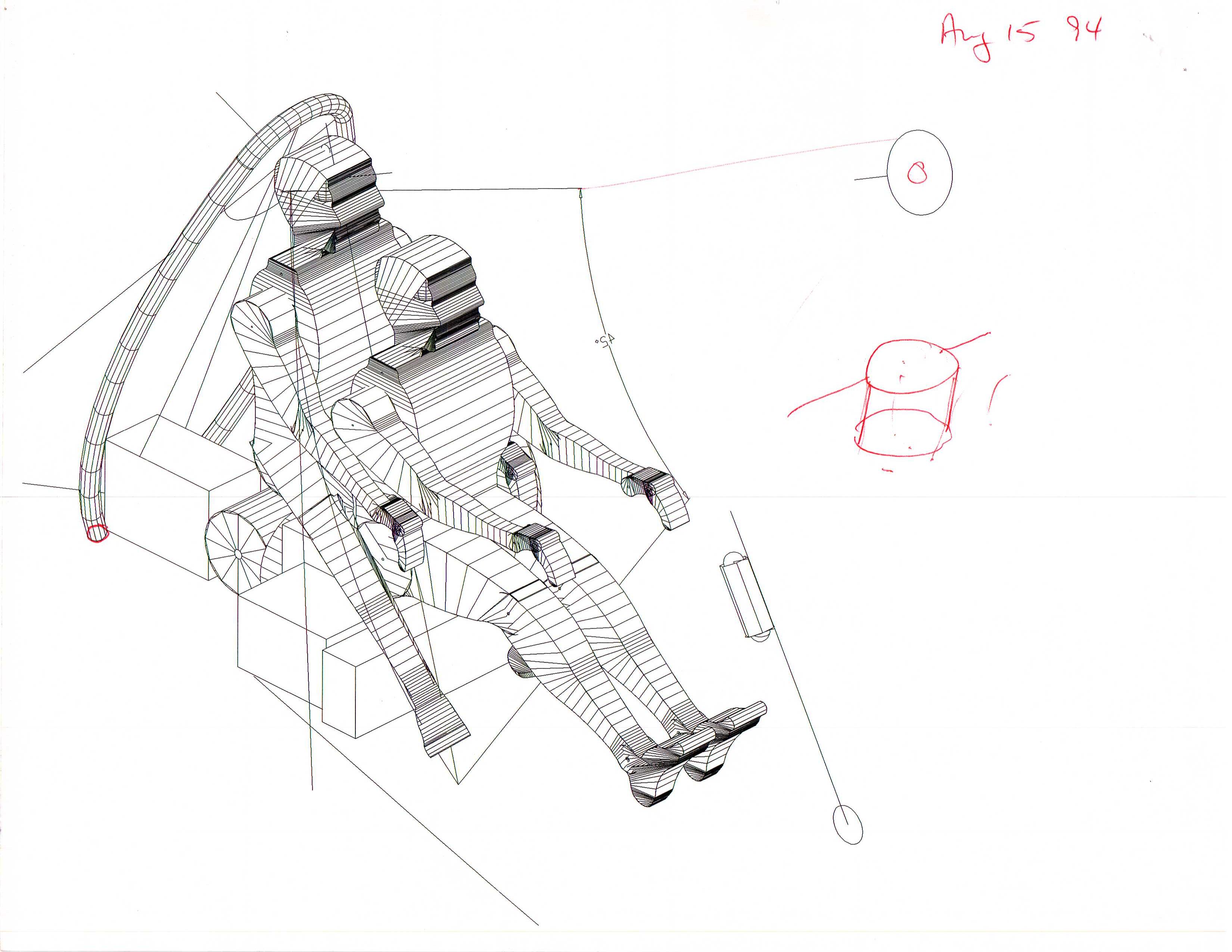
|
 |
  |
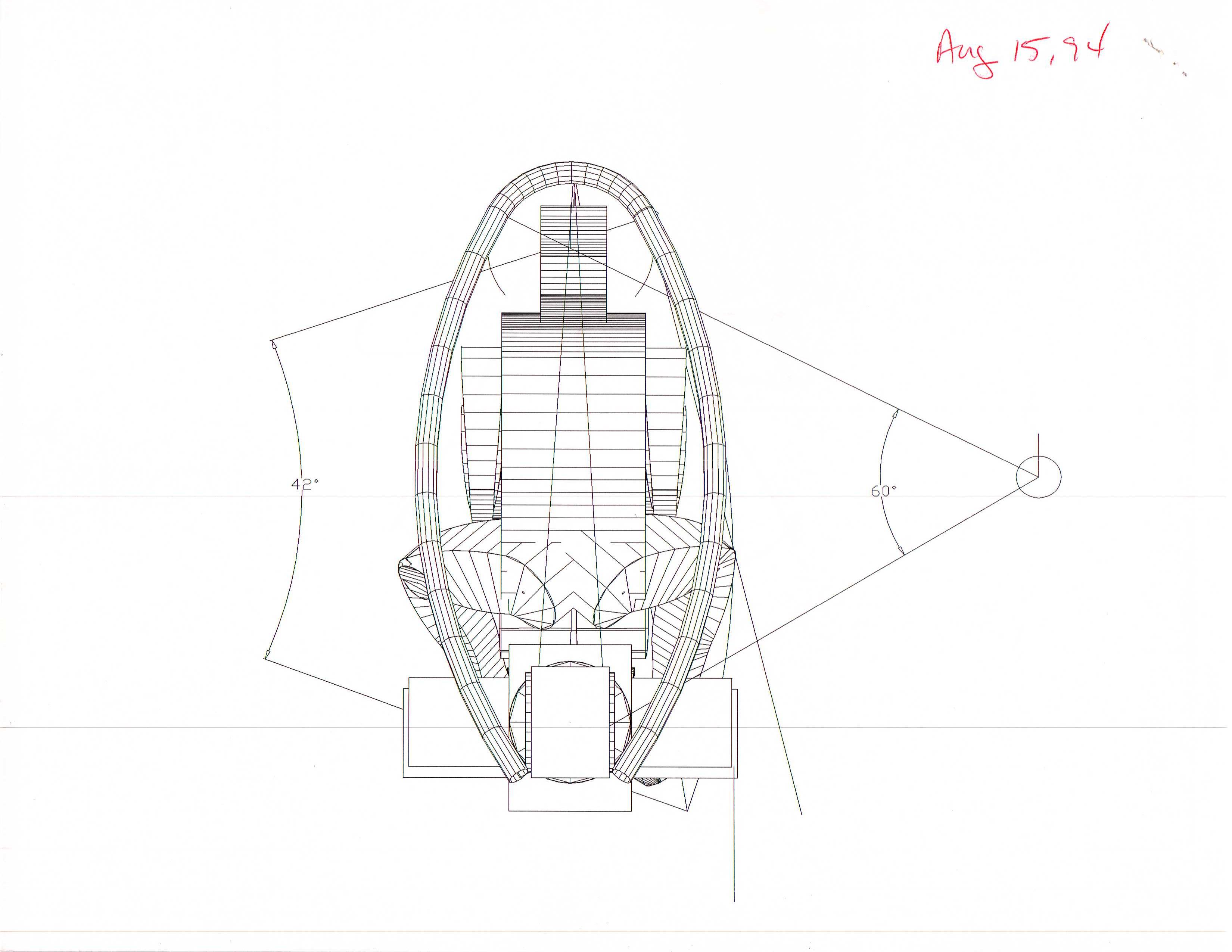 A rear-view of the seats from August 1994. 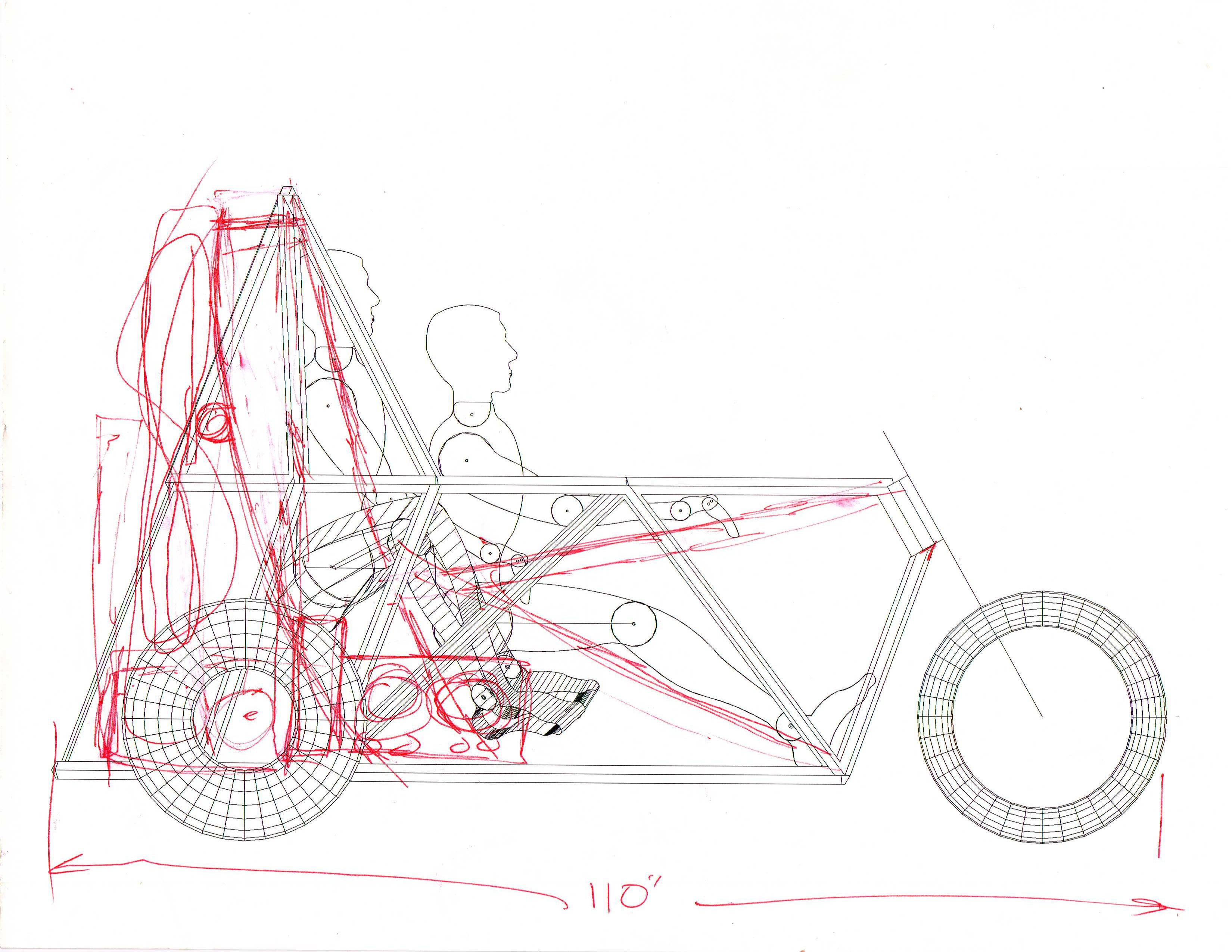 Back to the old 2D figures, for a check plot. Back to the old 2D figures, for a check plot.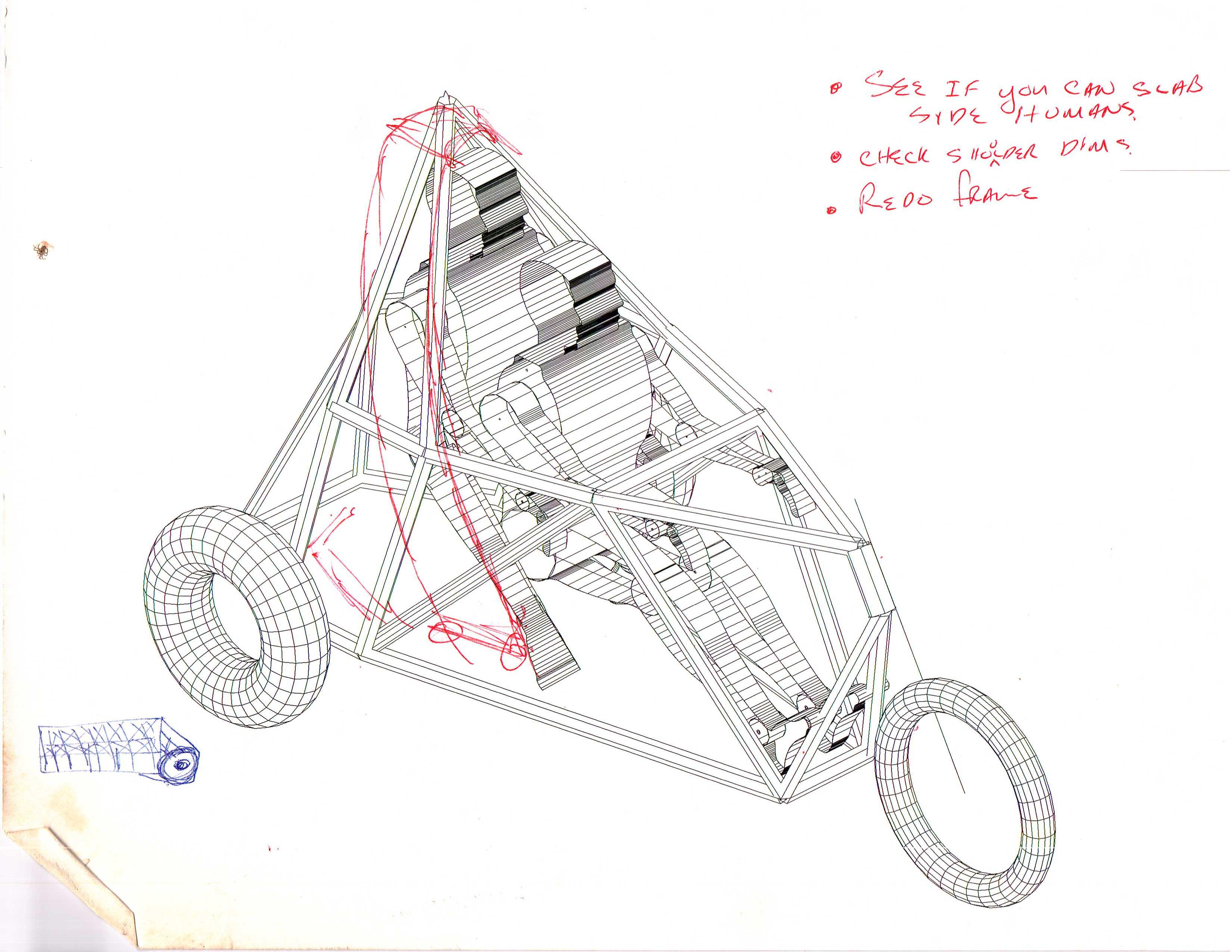
With the block figures with the arc uprights to help viability. |
 |
  |
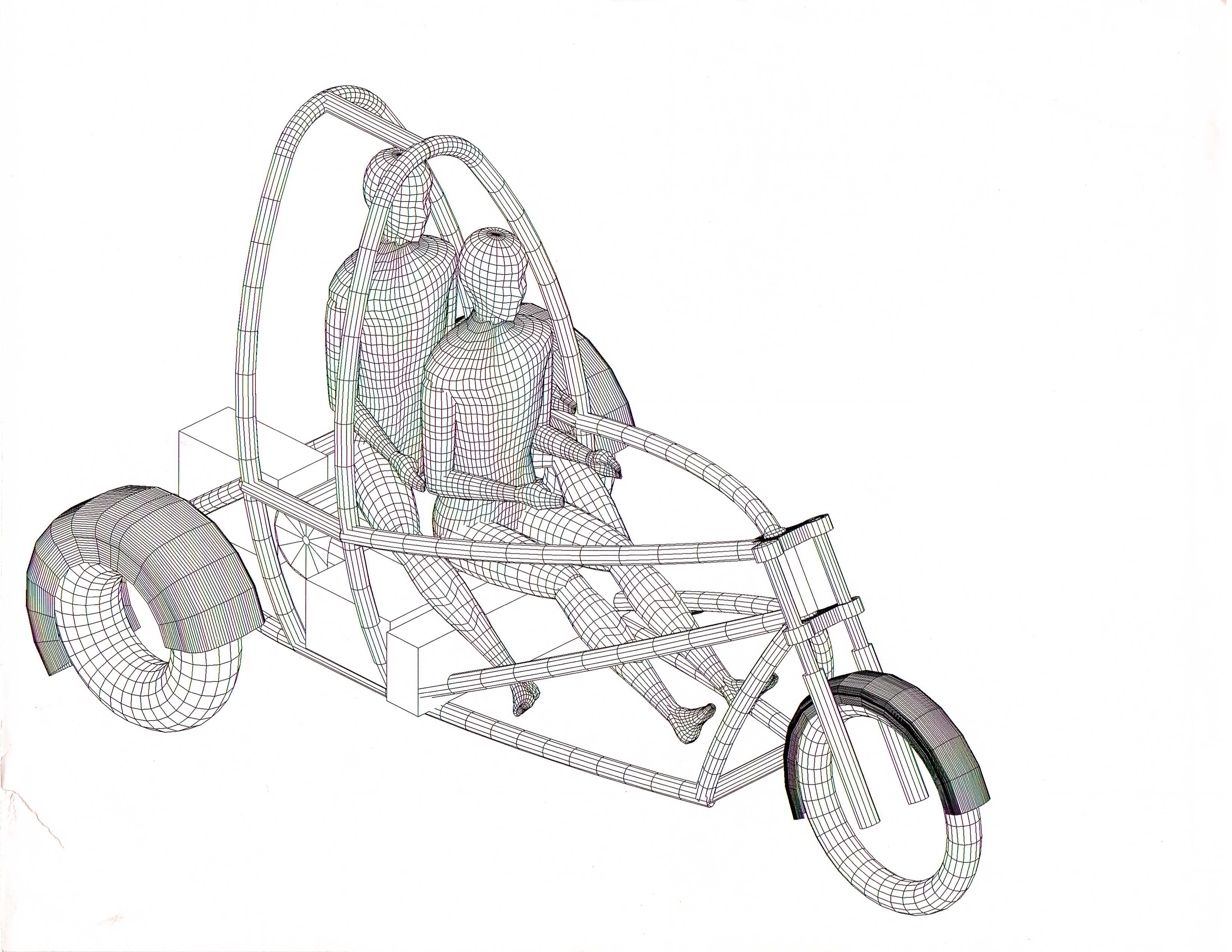 Replacing the block figures with purchased mesh mannequin figures. 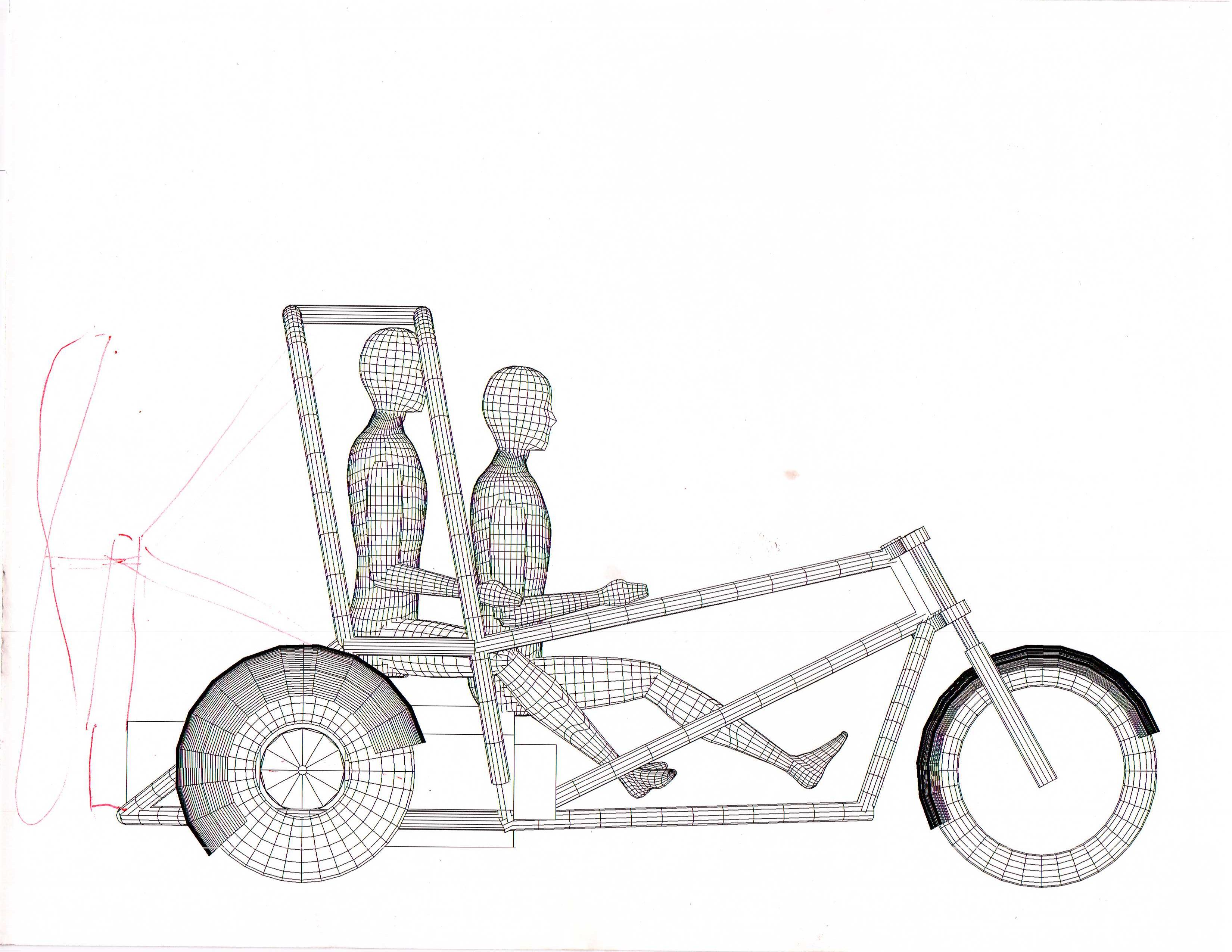 Side-view with the nice manikin figures. 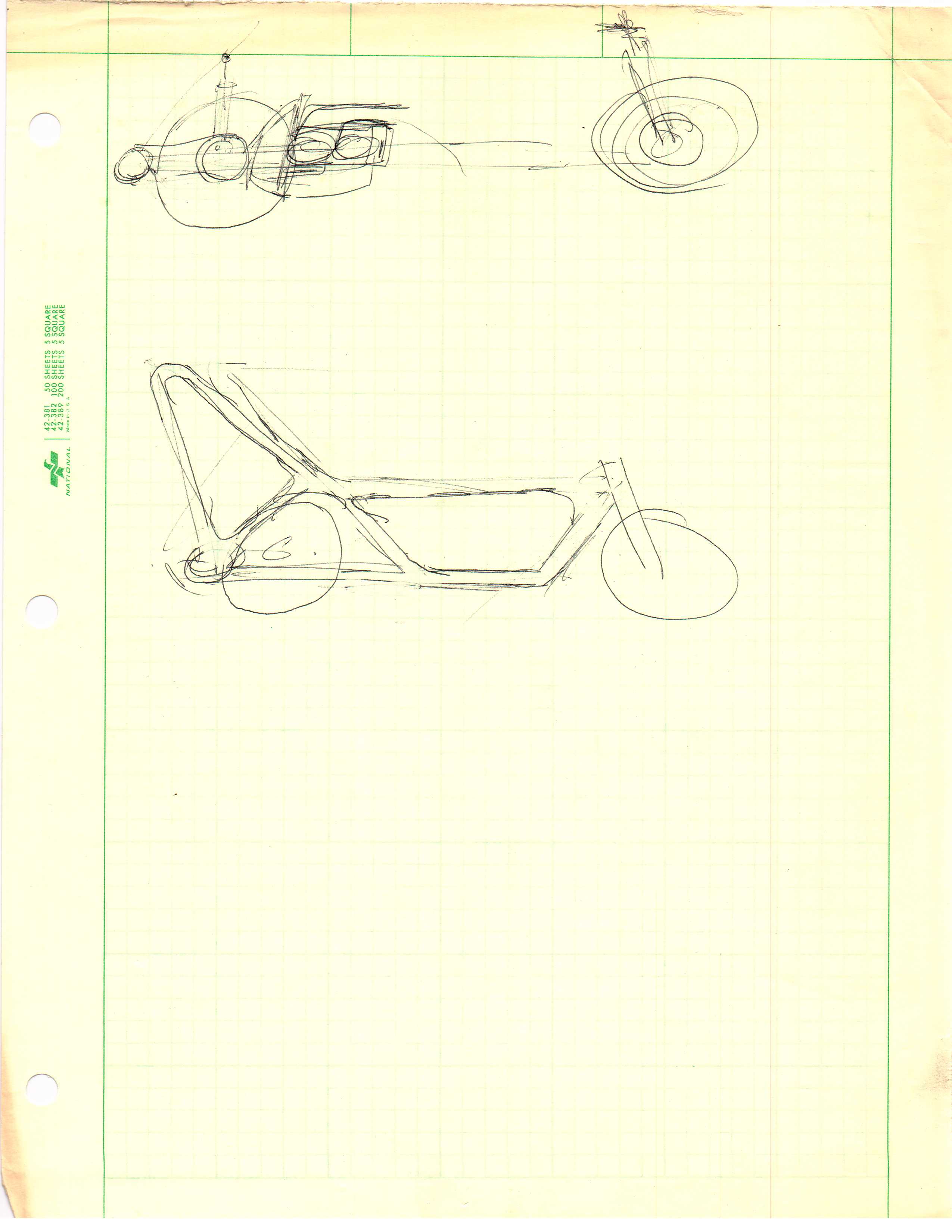 This is an undated odd-ball sketch showing a different structure for the aircar. |
 |
  |
This post is in these categories:This post has these tags:
Categories |  |
  |